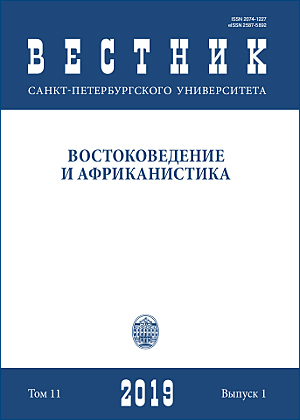Same But Different? On copies of the general history Ḥabīb al-siyar in Saint Petersburg manuscript collections
DOI:
https://doi.org/10.21638/spbu13.2019.104Abstract
Manuscript copies of the 16 th century general history Ḥabīb al-siyar fī akhbār afrād al-bashar (Beloved of Careers: On the Accounts of People) written in Persian by Ghiyāth al-Dīn Muḥammad Kh v āndamīr (d. 942/1535–6) are preserved in many collections worldwide. As the author rewrote his text several times during the time he worked for the Safavids under Shah Ismāʿīl in Iran and the Mughal emperor Bābur in India respectively, extant copies of the work are not identical but differ remarkably. The article tackles the issue of textual differences in extant manuscripts and is threefold: first, it discusses observations advanced in the writings of the Russian scholar N. D. Miklukho-Maklai based on his work at the Institute of Oriental Manuscripts of the Russian Academy of Sciences. Second, it examines variations in the corpus of twenty-five copies of Ḥabīb al-siyar kept today in the manuscript collections of the Institute of Oriental Manuscripts, the National Library of Russia, and Saint Petersburg State University. The textual differences contained in the manuscripts of the corpus clearly indicate that Ḥabīb al-siyar had two versions of equal status (“Shiʿi” and “Sunni”). In a last step, by exploring paratextual elements such as ownership and endowment remarks, or birth notes, the article addresses the question of readership, i.e. how people actually read, copied, sold or commented upon copies of the work.
Keywords:
Persian historiography, Safavids, Mughals, manuscript studies, paratext
Downloads
References
Downloads
Published
How to Cite
Issue
Section
License
Articles of "Vestnik of Saint Petersburg University. Asian and African Studies" are open access distributed under the terms of the License Agreement with Saint Petersburg State University, which permits to the authors unrestricted distribution and self-archiving free of charge.





